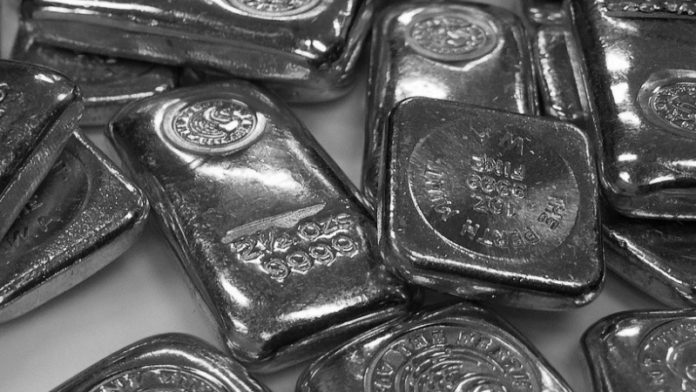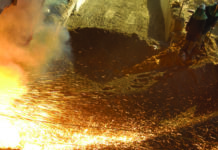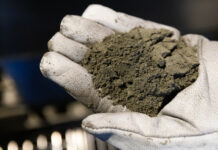
AFTER several months of positively trending prices, platinum has staged a full-throated rally, gaining 20% in just more than a month and taking sister metal palladium some of the way with it. All told, platinum is 44% stronger this year — a development that turns on three factors.
First, metal reserves are in decline and there is little prospect of sustained supply in the long term. Second, balance sheets are eroding faster than expected. This means production is vulnerable to cutbacks.
Third, the market penetration of battery electric vehicles, existentially threatening to platinum group metals (PGMs) because they don’t need autocatalysts, is lower than consensus. This unexpected factor wasn’t priced into the market.
Where once PGM prices tended to be range-bound, flickering occasionally as traders covered short positions, there now appears to be a recovery driven by fundamentals of supply and demand evident across the suite. The PGM basket, which includes rhodium and ruthenium, is 19% higher this year, with all of them rising except iridium.
Long- and short-term factors are at work. Heavy rains in the first quarter affected production at Valterra Platinum and Impala Platinum (Implats). Partly as a result of this, South African exports of the three main metals — platinum, palladium and rhodium — fell 25% in April (down 14% year to date), according to data collected by multinational bank UBS.
“A multiplicity of factors is seemingly converging to catalyse what could be the beginning of another upcycle in PGMs,” said Investec’s Nkateko Mathonsi in a report this month.
This is good news for the miners. Though their share prices have run ahead of expectations, those of Implats and Northam Platinum in particular, the recent one-fifth lift in platinum is especially sweet.
Most of the PGM industry had been operating at cash breakeven for six months. That’s now changing, says Implats head of corporate affairs Johan Theron. The industry’s revenue basket has risen about 15%, or R3,000, per 6E ounce, he said in an emailed response to questions in June. “This will flow straight to the bottom line.”
Nedbank Securities analyst Arnold van Graan favours Valterra, recently demerged from Anglo American. It has the best resources and probably one of the best mines in Mogalakwena, with major expansion potential. “[Valterra] remains one of the better long-term PGM investment cases,” he said. “This is largely a function of its strong balance sheet.”
But what of Sibanye-Stillwater, hit the hardest during the downturn? According to the company, the improvement in PGM basket price this year is equivalent to R1.1bn in additional earnings before interest, tax, depreciation and amortisation (ebitda). Applied retrospectively to Sibanye-Stillwater’s 2024 financial year, it would have generated R6.4bn more in revenue.
Coupled with increased profitability from Sibanye-Stillwater’s South African gold operations — which reported first-quarter ebitda of R1.8bn, compared with R652m for the first quarter of 2024 — “there will be a significant increase in group profits for 2025”, said the group’s spokesperson, James Wellsted.
Said Van Graan: “Sibanye is highly leveraged to PGM prices, which makes it a good stock to position for a PGM price rally.” Shares in the company have nearly doubled this year.
The higher prices also mean Sibanye-Stillwater is under less pressure at its US mine, Stillwater. Restructuring in 2024 resulted in a 300,000 ounces cut in production, about 50% of the total. Even then, remaining production was under water. Subsidies from the US government, under section 45X of the Inflation Reduction Act, could ameliorate but not overcome the problem.
The section 45X tax credits, as well as ebitda from Sibanye-Stillwater’s recycling operations, are expected to reduce Stillwater’s total costs (including capex) to $1,017/oz (platinum and palladium). For Stillwater to survive, however, it would have needed to make yet more total cost cuts — unless the market recovered, which has materialised. Stillwater’s basket price is now $1,134/oz. Deliverance indeed.
Meanwhile, increased demand for platinum jewellery in China has resulted in a fourth, surprise element driving PGM prices higher. First-quarter Chinese gold jewellery demand fell 32% year on year, while platinum jewellery demand rose 26% over the same period, according to data from industry-backed body the World Platinum Investment Council.
This is off a low base; from the peak of 2.1-million ounces of annual demand in 2013, Chinese platinum jewellery demand has fallen to about 500,000oz annually. Jewellers are now focusing on platinum, though it’s worth remembering that weddings in China have been in decline and gold remains cheaper to fabricate into wedding bands than platinum.
There are other cautionary factors. According to UK-based consultancy SFA (Oxford), PGM price improvements are about falling supply. But it says demand remains variable in certain key sectors of the market, such as the glass industry. It also thinks there are still enough above-ground stocks to cap a sustained recovery. For now, the sun has risen on PGMs.
A version of this article first appeared in the Financial Mail.







